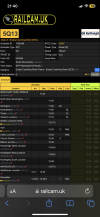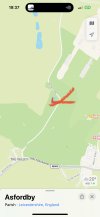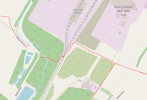I imagine the 810s will be quite similar int terms of traction control and braking to the existing 80x fleets. I believe the diesel generator sets are controlled electronically by the computers on board. The driver selects the power setting on their power brake controller (which controls) AC and diesel, then the computer decides what RPM to run the various engines at to produce the optimum output from the gensets. I believe there are speed curves involved where the engines hustle the train up to around 40mph quite quickly, but then the demand eases - at least on the GWR ones. But they have had around eighty versions of the software so far.
The class 800s and 802s on the GWR routes are subtly different in terms of control. Both have rheostatic pods on their roofs but the 800s have less capacity because the DfT were intending to wire most of their routes - Swansea, Oxford and Bristol. None of these have happened so the GWR 801s were modified to become 800/3s with diesels. The 802s were designed more as a bimode as they were planned to replace the HSTs with less time under the overhead wires. A byproduct of this is the difference in braking under rheo conditions when passing through neutral sections. Not sure whether the 810s will get the "full fat" rheo braking like the 802s, or the "slimline" version like the 800s.
So in terms of braking, the majority will be rheo using the traction motors to decelerate, then blending in the air brakes below a certain speed, but this obviously depends o nthe EMR electrification and how the 810s are set up.
One other difference will I believe be floor height. The 800s were built with a slightly higher floor height in the motor cars to take account of the MTU engine under the floor. Because of this i believe there are very slight "ramps" in the vestibules between the GWR and probably LNER 80x. I understand the EMR class 810s will have four cars powered out of the five, which means one of the driving vehicles if not both will have the slightly higher floor compared to the class 80x designs. Perhaps both end cars will be powered, with two of the three middle cars.



